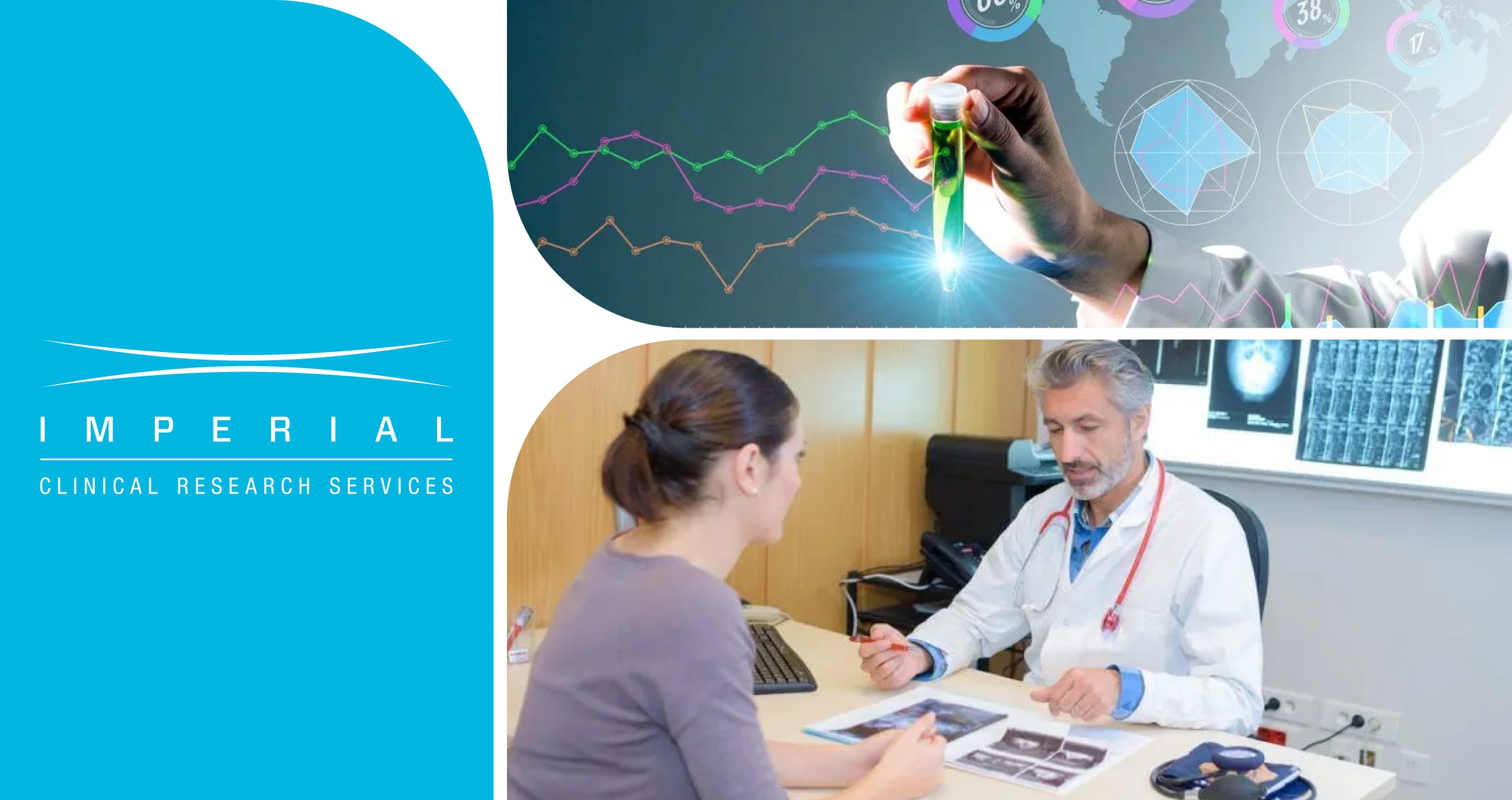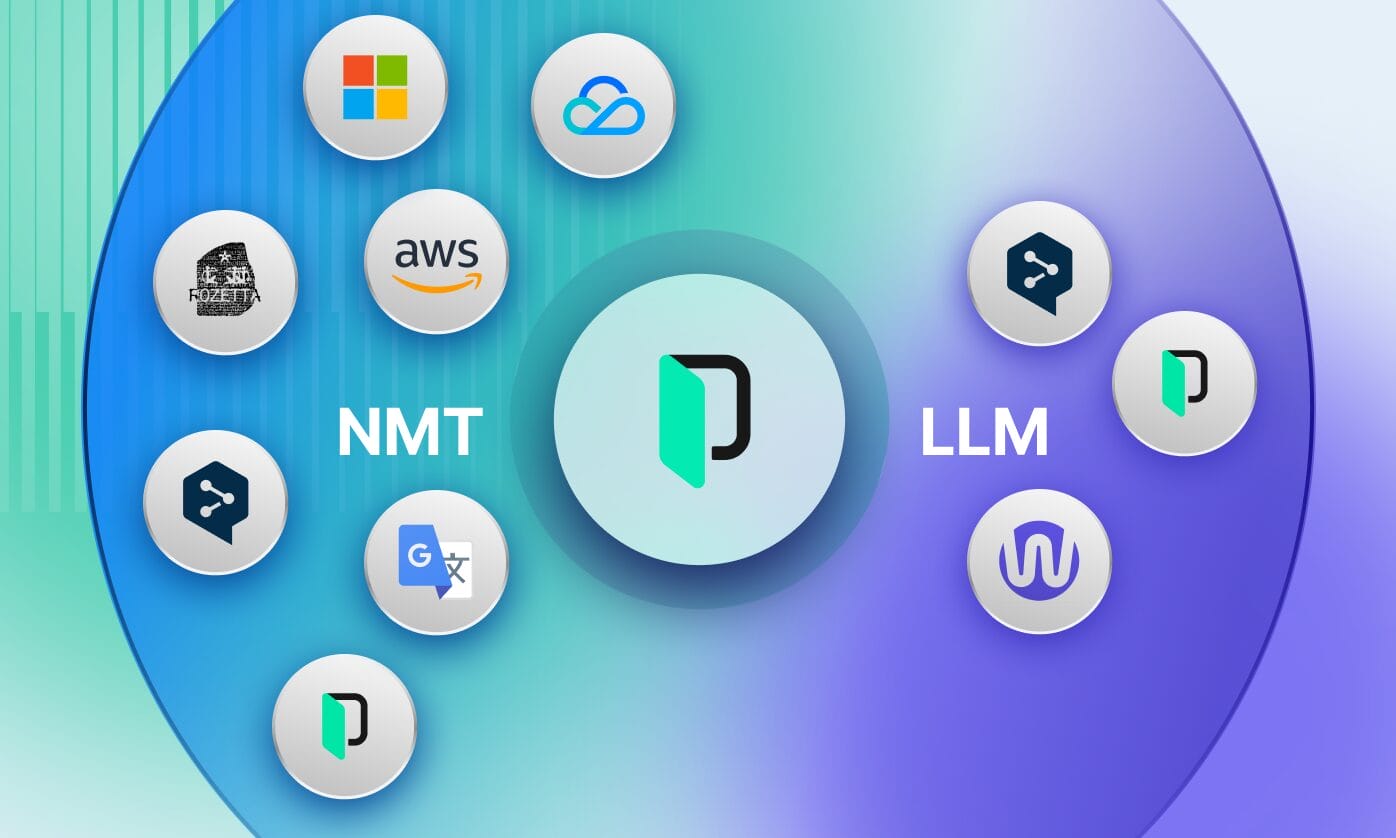Meeting ACA Section 1557 Language Access Requirements in 2025
The Ultimate Guide For Modern Healthcare Providers
The new reality of language access in healthcare
If you work in healthcare, you know how critical clear communication is. When patients can’t fully understand their doctors, prescriptions, or medical paperwork, it doesn’t just cause confusion—it can lead to misdiagnoses, delayed treatments, and poor health outcomes. That’s exactly why language access is such a big deal.
And now, it’s no longer just a best practice—it’s the law.
As of July 5, 2024*, healthcare providers and organizations that receive federal funding must follow new, stricter language access requirements under Section 1557 of the Affordable Care Act (ACA). These regulations aim to eliminate language barriers, ensuring that people with Limited English Proficiency (LEP) get the care they need—without confusion, delay, or risk.
(*While the final rule became effective on July 5, 2024, certain provisions have extended compliance deadlines. Specifically, covered entities with fewer than 15 employees have until July 5, 2025, to comply with Section 1557 requirements. Larger organizations are expected to comply by the initial effective date.)
So, what does this mean for you?
If your organization accepts Medicare, Medicaid, or other federal funding, you’re legally required to provide qualified interpreters, accurate translations, and effective communication for LEP patients. And it’s not enough to simply “do your best”—there are specific steps you need to take to comply.
This guide will break it all down for you—what’s changing, what’s required, and most importantly, how you can make compliance easier using modern language technology, AI-powered translation tools, and streamlined processes.
Why section 1557 matters now more than ever
Healthcare discrimination laws have been around for a while, but language barriers have remained a huge issue. Millions of people in the U.S. don’t speak English fluently, and for them, navigating the healthcare system can feel impossible.
The latest 2024 update to Section 1557 strengthens protections for these individuals by requiring that healthcare providers:
- Offer free, timely, and high-quality language assistance services
- Use only qualified interpreters and translators (no more relying on family members or untrained staff)
- Ensure that AI-powered translations are reviewed by a human expert
- Make vital healthcare information available in multiple languages
Not following these rules doesn’t just put patients at risk—it puts your organization at risk too. Failing to comply can lead to lawsuits, federal penalties, and even loss of funding.
Disclaimer
This guide is for informational purposes only and does not constitute legal, medical, or regulatory advice. While we strive to provide accurate and up-to-date information, compliance with ACA Section 1557 and other healthcare regulations requires careful interpretation of the law and professional guidance.
Healthcare providers and organizations should consult with qualified legal counsel, compliance specialists, or medical professionals before implementing any language access policies or strategies. Phrase does not provide legal, medical, or clinical advice, and reliance on the information in this guide is at your own risk.
The big changes you need to know (Effective July 2024)
1. “Meaningful Access” is now a legal standard
If your patients can’t fully understand their healthcare provider, they’re not getting “meaningful access” to care. Under the new law, providers must take reasonable steps to ensure every patient gets language assistance at no cost.
Common scenarios where this applies:
- A patient picking up a prescription—They must be able to read and understand dosage and side effects.
- An ER visit—A patient must understand what’s happening, even in high-pressure situations.
- Applying for health insurance—Patients must be able to navigate forms and policies.
- A doctor’s appointment—They must have access to an interpreter if needed.
Providers can’t assume that just because someone speaks “some” English, they don’t need help.
2. Only qualified interpreters and translators can be used
Gone are the days of relying on bilingual staff, family members, or Google Translate. The new law requires qualified professionals for both spoken and written language services.
- Qualified interpreters must be fluent in both English and the patient’s language, trained in medical terminology, and follow confidentiality standards.
- Qualified translators must ensure written medical materials are accurate, clear, and culturally appropriate.
Simply put—no more ad-hoc solutions.
3. Machine translation must be verified by a human expert
AI-powered translation tools are great, but they aren’t perfect. If an organization uses machine translation (MT) to translate vital documents, a qualified human translator must review and correct the content before it’s given to a patient.
Why? Because mistakes in medical translations can be dangerous. Imagine a mistranslation on a prescription label or surgical consent form—the consequences could be life-threatening.
The bottom line: AI is a tool, not a solution. You still need human oversight to ensure accuracy.
4. Websites and digital content must be multilingual
Patients must be able to find translated healthcare information online. This means organizations need to:
- Post in-language webpages—Not just a link to a Google translation.
- Provide translated vital documents—Forms, policies, and patient instructions must be available in the most commonly spoken languages.
- Ensure LEP patients can easily access info about language assistance services.
This applies to all digital touchpoints—from patient portals to appointment scheduling platforms.
Why compliance can be a challenge
While these updates are well-intentioned, compliance can feel like a logistical nightmare for healthcare organizations, especially when:
- Staff aren’t trained on language access laws.
- Interpreters and translators are expensive and hard to schedule.
- Machine translation isn’t always reliable without human review.
- Telehealth and digital platforms aren’t optimized for multiple languages.
Many hospitals and clinics currently rely on third-party interpreting services like Martii, Jeenie, and Boostlingo, which provide remote medical interpreters. While helpful, these solutions don’t address website translation, AI-assisted workflows, or patient self-service tools.
That’s where modern localization solutions—like Phrase—can make a real impact.
What’s next?
In the next sections, we’ll look more closely at:
- How to choose the right language access solutions for 2025
- Step-by-step strategies for full compliance
- How healthcare providers can track success and meet HHS standards
- Practical tools and resources to simplify the process
Staying compliant doesn’t have to be overwhelming—with the right approach, you can meet regulatory requirements while improving patient experience and outcomes.
The “Meaningful Access” mandate: What it really means for healthcare providers
If there’s one phrase healthcare organizations need to remember from the new ACA Section 1557 updates, it’s “meaningful access.”
This isn’t just a guideline—it’s the legal standard for providing language assistance to Limited English Proficient (LEP) individuals.
Let’s break down exactly what this means, why it matters, and how your organization can stay compliant.


What is “Meaningful Access”?
Under the new rule, meaningful access means that every LEP individual must be able to fully understand and engage with their healthcare experience—just like an English-speaking patient would.
It’s not enough to “get by” with broken English or guesswork.
Patients must fully understand their diagnosis, treatment options, medications, and paperwork.
Organizations must provide clear, timely, and accurate language assistance—free of charge.
And here’s where it gets serious: If a language barrier prevents a patient from receiving proper care, that’s considered discrimination under federal law.
Who is considered an LEP individual?
A Limited English Proficient (LEP) individual is someone whose primary language is not English and who has difficulty reading, writing, speaking, or understanding English well enough to navigate their healthcare experience.
This doesn’t just apply to non-English speakers—it includes individuals who might be able to hold a conversation in English but struggle with complex medical terminology.
For example, a patient might be comfortable ordering a coffee in English but not be able to fully understand:
– Discharge instructions after an ER visit
– How to properly take a new medication
– A consent form before surgery
That’s why assuming a patient “knows enough English” can be dangerous

To be clear, while the Department of Health and Human Services (HHS) defines “meaningful access” as taking reasonable steps to provide timely, accurate, and effective communication to LEP individuals. While failure to provide such access can be considered discriminatory, the emphasis is on the reasonableness and effectiveness of the steps taken, considering factors like the entity’s resources and the nature of the communication.
When is language access absolutely essential?
While all healthcare interactions should meet language access requirements, there are some situations where the risks of miscommunication are especially high.
In a high-pressure ER environment, every second counts—and language barriers can be life-threatening.
❌ A patient with chest pain may struggle to describe symptoms accurately.
❌ A doctor might misinterpret a patient’s allergy history.
❌ A consent form for an urgent procedure might not be fully understood.
To comply with Section 1557, ERs must have qualified medical interpreters available 24/7—either in person or via video/phone services.
Misunderstood medication instructions can lead to serious health risks, including:
- Overdosing or taking the wrong dosage.
- Dangerous drug interactions that a patient doesn’t understand.
- Skipping essential medication due to confusion or fear.
Pharmacies must provide translated labels, medication guides, and access to interpreters when needed.
Every conversation between a provider and an LEP patient needs accurate communication.
❌ A patient might not fully understand a diagnosis or the severity of a condition.
❌ They might miss important lifestyle recommendations that could prevent complications.
❌ A doctor might assume a patient understands follow-up care when they actually don’t.
This applies to telehealth visits as well—providers must ensure language services are just as accessible online as they are in person.
The complexity of healthcare paperwork can be overwhelming—even for native English speakers.
For LEP individuals, understanding insurance options, Medicaid/Medicare applications, and financial assistance programs can be nearly impossible without language support.
Healthcare organizations must provide translated materials and in-language assistance to ensure equitable access.
How machine translation fits into the new rules
Artificial Intelligence (AI) and machine translation (MT) tools have come a long way—but they are still not sufficiently compliant for critical healthcare content.
The new ACA rules require that all machine-translated content be reviewed by a qualified human translator.
There are several reasons for this:
- Medical terms can be mistranslated, leading to confusion or serious health risks.
- Tone and meaning can be lost, especially with complex medical explanations.
- Different dialects matter—a machine might not recognize regional language differences.
When can AI translation be used?
✅ For general, non-critical content—basic website pages, educational materials, or appointment reminders.
✅ For internal use—helping a provider get a basic understanding of a patient’s language needs before engaging a human interpreter.
When AI translation MUST be reviewed by a human:
❌ Medical consent forms
❌ Discharge instructions
❌ Prescription labels and medication guidelines
❌ Emergency communication
❌ Any document that directly affects a patient’s care
If a healthcare organization relies on AI alone for translating critical documents without human review, they are breaking the law and putting patients at risk.
The regulations do acknowledge the utility of machine translation tools however, and Machine Translation can be used for less critical content, but vital documents—such as those pertaining to medical care, consent forms, and patient rights—must involve human translation to ensure accuracy and cultural appropriateness.
While the use of qualified interpreters and translators is mandated, the regulations also allow for the use of bilingual staff if they meet the qualifications outlined by HHS, including proficiency in both languages, knowledge of medical terminology, and adherence to confidentiality standards. Family members or friends should not be used as interpreters except in specific circumstances, such as emergencies.
Making meaningful access work in the real world
So, how can healthcare organizations meet these new standards without adding excessive administrative burdens?
The good news is—modern technology and smart integrations can make compliance much easier.
Here’s what successful organizations are doing:
- Using a mix of qualified human translators and AI-powered translation tools for efficiency.
- Integrating language access into their EHR (Electronic Health Records) and telehealth platforms.
- Partnering with modern interpretation services that provide on-demand video and phone interpreters.
- Automating website and document translation workflows to keep up with changing regulations.
For example, Phrase provides end-to-end translation solutions that can help organizations streamline compliance while keeping costs down. With AI-powered workflows, human review checkpoints, and easy integration into existing healthcare platforms, organizations can meet these new language requirements without overwhelming their teams.
What’s next?
Now that you understand what “meaningful access” means and how to avoid compliance pitfalls, the next step is to explore the best language access solutions available in 2025.
- Which medical interpretation services are the best fit for your organization?
- How can you integrate translation tools into your existing systems?
- What strategies make compliance easier—and more cost-effective?
Language access solutions in 2025:
In today’s healthcare landscape, ensuring effective communication with patients who have Limited English Proficiency (LEP) is not just a regulatory requirement but a cornerstone of quality care. Let’s explore the traditional language access solutions available and how modern platforms (including Phrase) are enhancing these services to meet the evolving needs of healthcare providers.
Traditional language access solutions
Healthcare organizations have long relied on various interpretation services to bridge language gaps. Here’s a look at some of the prominent providers:
Boostlingo
Services: Boostlingo offers on-demand video and over-the-phone interpretation in over 300 languages, including American Sign Language (ASL). Its interpreters undergo rigorous training, meet minimum experience requirements, and maintain HIPAA compliance. The platform boasts a 99.9% call satisfaction rate.
Accessibility: Provides 24/7 access to qualified medical interpreters, ensuring timely communication support.
Jeenie
Services: Jeenie connects healthcare providers with certified medical interpreters via a HIPAA-compliant platform accessible on any device. It offers services in over 300 languages, including ASL, typically connecting users with an interpreter within 30 seconds.
Quality Assurance: All Jeenie interpreters have an average of four years of medical interpreting experience, are HIPAA certified, and are required to maintain a 4-star client rating to work on the platform.
Martti
Services: Martti provides on-demand video and audio medical interpretation services. It focuses on delivering qualified interpreters to healthcare settings to improve patient care and satisfaction.
Specialization: Emphasizes quick connection times and a broad network of interpreters to meet diverse language needs in medical environments.
These traditional platforms have been instrumental in facilitating real-time communication between healthcare providers and LEP patients. However, as the demand for comprehensive language services grows, there’s a need for more integrated solutions that encompass not only interpretation but also translation of vital documents and digital content.
How Phrase enhances language access
The Phrase Localization platform goes beyond traditional interpretation services, with capabilities designed to meet the multifaceted language needs of healthcare organizations.
Practical examples of Phrase in action
Several organizations have successfully leveraged Phrase to overcome language barriers and enhance communication:
Knowing Neurons
Knowing Neurons is a platform dedicated to sharing neuroscience knowledge with the broader public.
Challenge: Neuroscience content was primarily available in English, limiting accessibility for global audiences.
Solution: By leveraging the Phrase Localization Platform, Knowing Neurons translated over 140 articles into Spanish, enabling the launch of a dedicated Spanish-language site. The project’s success has sparked translations into German and Turkish, with plans for further expansion.
Impact: The initiative received academic recognition, awards, and high engagement, demonstrating the power of AI-driven localization.


Imperial Clinical Research Services
Imperial Clinical Research Services is a global leader in clinical trial solutions, specializing in translation, patient engagement, and study materials across 100+ countries.
Challenge: With a vast translation workload spanning 100+ languages and hundreds of linguists, Imperial sought to automate workflows, maintain control over translation memory, and improve efficiency while ensuring quality.
Solution: By implementing Phrase TMS, Imperial streamlined translation processes, reduced manual tasks, and improved workflow automation. Faster project completion, consistent translations, and robust quality assurance enhanced operational efficiency.
Impact: Reduced release cycle times, minimized troubleshooting, and a seamless transition with Phrase’s market-leading technology and support.
Read the full case study to see how Phrase TMS transformed Imperial’s translation operations >>>
CLEAR Global
CLEAR Global ensures vital information is accessible to all, regardless of language, by connecting NGOs with expert translation and technology solutions.
Challenge: As its humanitarian language services expanded, CLEAR Global needed a scalable, sophisticated translation management system to handle growing project complexity and better support its 100,000-strong volunteer network.
Solution: By implementing the Phrase Localization Platform, CLEAR Global streamlined translation workflows, enhanced efficiency, and provided its volunteers with access to professional translation tools. This transformation enabled faster, higher-quality translations, improving communication for global humanitarian efforts.
Impact: Increased operational speed, enhanced project visibility, and improved volunteer training have strengthened CLEAR Global’s mission.
Read the full case study to see how Phrase empowers global communication for social good >>>

By integrating Phrase into their operations, healthcare organizations can enhance their language access services, ensuring compliance with regulations and, more importantly, providing equitable care to all patients, regardless of language barriers.
Step-by-Step Compliance Guide: Meeting ACA Section 1557 Language Access Requirements
Healthcare organizations need a clear, actionable strategy to comply with the updated ACA Section 1557 language access requirements. In the following section, we’ll walk you through each step, helping you ensure compliance while improving patient communication and care.
You can use the following sections of this guide as a checklist to help verify your organization’s compliance efforts.
Step 1: Build a compliant Language Access Plan (LAP)
A Language Access Plan (LAP) is the foundation of compliance. It outlines how your organization will provide language assistance services (LAS) to Limited English Proficient (LEP) individuals.
What to include in your LAP:
- Assessment of language needs: Identify the most commonly spoken languages in your service area. Use census data, patient records, and surveys.
- Policies and procedures: Define how you will provide interpretation and translation services for patients.
- Roles and responsibilities: Assign a Language Access Coordinator to oversee compliance and implementation.
- Language assistance resources: List available interpreters, translation tools, and digital language services.
- Training program: Plan regular staff training on language access laws, technology, and best practices.
- Ongoing evaluation: Establish a system to track language access service requests, utilization rates, and patient feedback to measure success.
Pro Tip:
Your LAP should be a living document—regularly update it based on patient demographics, staff feedback, and compliance reviews.
Step 2: Translate and update vital documents
Under ACA Section 1557, all critical patient-facing documents must be available in multiple languages.
What counts as a “Vital Document”?
- Patient intake forms
- Consent forms (surgery, treatment, billing, etc.)
- Discharge instructions
- Medication labels and pharmacy instructions
- Health insurance applications
- Financial assistance policies
- Notices of nondiscrimination and language access services
How to ensure accuracy and compliance
- Prioritize the most common languages spoken by your patients. Use census data, EHR records, and community surveys to determine which languages are needed.
- Use AI-powered translation tools (like Phrase) to streamline document translation—but ensure a human translator reviews all critical content.
- Maintain consistency with translation memory and terminology management to ensure accurate medical terms across all materials.
- Review translations annually to update medical, regulatory, or procedural changes.
Step 3: Website translation best practices
Your website is a primary access point for patients. Under the new regulations, healthcare providers must ensure multilingual accessibility for online resources.
However, the regulations do not mandate the translation of entire websites but focus on key information necessary for meaningful access.
Key website translation requirements
- Homepage and key sections: Your homepage should feature a clear link to language assistance services in the top 15 most commonly spoken languages in your state.
- Online Patient Forms: Ensure appointment booking, insurance applications, and consent forms are translated.
- Health and treatment information: Provide patient education materials in multiple languages.
- Machine translation with human review: AI-driven translation can speed up content delivery, but a qualified human must review critical pages for accuracy.
- SEO optimization for multilingual content: Ensure translated pages are indexed properly in search engines so LEP individuals can find them easily.
Step 4: Establish a system for Language Access Service (LAS) requests
Patients must be able to request language assistance easily—whether online, by phone, or in person.
How to set up a request system:
- Add a “Request an Interpreter” button to your website: Patients should be able to request spoken or sign language interpreters when booking appointments.
- Train Frontline Staff: Receptionists, nurses, and scheduling teams must know how to access LAS services quickly.
- Use a dedicated language access hotline: A direct phone line ensures fast, 24/7 interpreter access.
- Ensure multi-platform access: Patients should be able to request services via EHR systems, telehealth platforms, or patient portals.
Step 5: Training staff on compliance and technology
Even the best language access plan won’t work if your staff don’t know how to use it.
Essential training topics for healthcare staff:
- Legal compliance: Ensure employees understand ACA Section 1557 requirements and their legal responsibilities.
- How to identify LEP patients: Staff must know how to recognize when a patient needs language support and how to offer services proactively.
- Using interpretation services: Train staff on how to request interpreters (onsite, phone, or video).
- Handling emergency situations: Ensure ER and urgent care teams know how to access interpreters instantly.
- Using AI translation and digital tools: Teach staff how to use AI-powered translation platforms while ensuring human review for critical documents.
- Cultural competency: Educate staff on respectful and effective cross-cultural communication.
Pro tip:
Use e-learning platforms and quarterly refresher courses to ensure training remains up-to-date.
Final checklist: Is your organization compliant?
🔲 You have a documented Language Access Plan (LAP).
🔲 Vital documents are translated and updated regularly.
🔲 Your website provides multilingual access to essential healthcare information.
🔲 Patients can easily request language assistance services.
🔲 Your staff are trained on compliance, interpretation, and translation tools.
If you checked all the boxes—your organization is on the right path to full compliance!
Next steps: Stay ahead of compliance requirements
Staying compliant with ACA Section 1557 doesn’t have to be overwhelming. By integrating AI-powered translation tools, automated workflows, and trained interpreters, healthcare providers can make compliance simple and scalable.
How HHS measures compliance: Key metrics for healthcare providers
To avoid penalties and ensure equitable care, healthcare organizations must track six core metrics that demonstrate they are providing meaningful access to patients with Limited English Proficiency (LEP).
| Key metric | What you need to track | HHS evaluation criteria | How Phrase can help | Pro tips for success |
| Language assistance utilization rates | Number of LEP patients served; Frequency of interpreter requests (onsite, phone, video, ASL); Number of translated documents accessed/downloaded. | HHS compares utilization rates to LEP patient demographics. Low utilization may indicate lack of accessibility or awareness. | Provides advanced analytics to monitor language service usage; Centralized platform consolidates all translation activities for easier reporting. | Use automated tracking tools within EHR systems or patient portals to monitor interpreter and translation requests. |
| Timeliness of language assistance services | Average wait time for an interpreter (in-person, phone, video); Turnaround time for document translations; Speed of website content updates in multiple languages. | Delays in interpreter availability or document translation can be considered a barrier to care, violating meaningful access standards. | Phrase Orchestrator automates translation workflows, reducing turnaround time; Real-time collaboration speeds up review processes. | Ensure immediate access to emergency interpretation services within 5 minutes; High-priority documents should be translated within 24–48 hours. |
| Accessibility of translated materials & notices | Percentage of vital documents available in the top 15 languages; Visibility of language assistance notices; Accessibility of multilingual website pages & digital content. | HHS audits the availability and accessibility of translated materials. If translations are hard to find, compliance may be questioned. | Seamless CMS & digital platform integrations ensure translated materials are updated and accessible; In-context editor improves translation clarity. | Use analytics tools to measure document access rates; Conduct patient surveys to ensure they know about language access services. |
| Patient satisfaction & complaint resolution | LEP patient feedback on language access services; Number of complaints related to language barriers; Speed of complaint resolution. | Repeated complaints about language barriers may trigger compliance reviews. Slow resolution times may indicate inadequate services. | Auto LQA and Phrase QPS ensure high quality translation, reducing patient complaints; Feedback integration improves ongoing language services. | Implement multilingual patient satisfaction surveys; Assign a Language Access Coordinator to oversee complaint resolution. |
| Staff training & compliance knowledge | Percentage of staff trained on ACA Section 1557 & language access policies; Frequency of staff training; Staff proficiency in translation & interpretation tools. | HHS expects ongoing staff training. Lack of regular training is a major compliance red flag. | User-friendly interface simplifies translation management; Resource hub offers continuous training support for best practices. | Host quarterly refresher courses for frontline staff; Use e-learning modules for ongoing compliance training. |
| Digital & Telehealth Compliance | Percentage of telehealth services offering interpretation options; Availability of translated patient education materials; AI & human-reviewed translation use in telehealth documentation. | HHS is scrutinizing telehealth platforms for language accessibility. If patients cannot access interpreters or translated materials online, compliance may be at risk. | Secure localization maintains patient confidentiality; Scalable solutions support rapid expansion of multilingual telehealth services. | Integrate multilingual chat support and real-time interpretation services into telehealth platforms; Ensure telehealth visit summaries & instructions are available in multiple languages. |
By integrating the Phrase Localization Platform into their operations, healthcare providers can effectively meet HHS compliance metrics, ensuring that language assistance services are timely, accessible, and of high quality.
A day in the life of a compliant healthcare provider: How seamless language access works in practice
To illustrate what full compliance with ACA Section 1557 looks like in the real world, let’s walk through a hypothetical day in a busy urban hospital. We’ll see how a well-implemented language access strategy ensures every patient—regardless of their primary language—receives equitable, timely, and high-quality care.
Morning: Emergency room visit

8:15 AM – Mrs. Nguyen, a Vietnamese-speaking patient, arrives at the ER with severe chest pain. She does not speak English fluently.
How a compliant provider responds
- Identifying language needs: The triage nurse asks a screening question: “What language do you prefer to communicate in?” Mrs. Nguyen points to an “I Speak” language identification card.
- Providing an interpreter: The nurse uses a telehealth-integrated interpreting system to connect with a Vietnamese-speaking medical interpreter within 30 seconds.
- Translating critical documents:
- The hospital has a workflow for translating standardized discharge instructions, which are commonly needed in multiple languages.
- If customized discharge notes are required, a hospital language services team or external translation provider must review and translate them manually before release.
- A bilingual staff member or human translator reviews AI-assisted translations to ensure medical accuracy before documents are given to the patient.
Compliance metrics met
- Timely language assistance: An interpreter was provided within minutes.
- Accurate and verified translations: Standardized multilingual materials were available, and custom translations were reviewed by a qualified human expert.
- Accessible information: Mrs. Nguyen left with clear aftercare instructions in Vietnamese, reducing risks of miscommunication.
Midday: pharmacy visit for prescription pickup

11:45 AM – Mr. García, a Spanish-speaking patient, arrives at the hospital’s pharmacy to pick up new diabetes medication.
How a compliant provider ensures language access
- Language-specific prescription labels: The pharmacist checks the patient’s record and sees Spanish as the preferred language. The hospital’s electronic prescription system includes multilingual capabilities, generating a Spanish prescription label when applicable.
- Ensuring medication understanding:
- If the system does not generate translated medication guides automatically, the pharmacist requests an approved translation from the hospital’s language access team.
- If immediate assistance is needed, the pharmacist calls a video interpreter to review instructions with the patient.
- Any ad hoc translations (for example, handwritten instructions) must be formally reviewed by a bilingual pharmacist or translation specialist to maintain compliance.
Compliance metrics met
- Translated vital documents: Standard prescription labels and medication guides were available in Spanish.
- On-demand interpretation: A trained interpreter ensured patient understanding, preventing errors.
Afternoon: Telehealth follow-up appointment

2:30 PM – Mrs. Hassan, a Somali-speaking patient, logs in for a post-surgical telehealth appointment.
How a Compliant Provider Ensures Digital Language Access
- Integrated language services:
- The hospital’s Electronic Health Record (EHR) system flags patients with LEP needs, ensuring staff are aware before the appointment.
- The telehealth scheduling system allows for pre-booking of a remote interpreter, so a Somali-speaking interpreter joins automatically at the start of the visit.
- Multilingual patient portal:
- The hospital’s web team maintains translated content for common post-surgical care instructions in Somali and other frequently spoken languages.
- If specific patient instructions require customization, the language services team translates them manually before uploading them to the portal.
Compliance metrics met
- Digital language access: Telehealth systems accommodate language preferences automatically.
- Accurate, timely translations: Commonly needed documents were pre-translated, while custom instructions were reviewed by a human translator before release.
End of day: Compliance review and reporting

5:00 PM – The hospital’s Language Access Coordinator reviews daily compliance reports and translation requests.
How a compliant provider racks and Improves Language Access
- Real-time monitoring:
- Interpretation service usage is logged, showing how many requests were made, which languages were most in demand, and average wait times.
- Website traffic reports highlight which translated documents were accessed and which ones may need updates.
- Translation quality control:
- Any discrepancies between AI-generated translations and human-reviewed edits are flagged for improving translation workflows.
- The hospital’s Translation Memory is updated with new medical terminology to ensure consistency in future translations.
- Ongoing staff training:
- Any missed compliance targets (e.g., delayed interpreter response times) are flagged for staff retraining.
- The hospital conducts periodic audits to ensure frontline staff understand how to access language services efficiently.
Compliance metrics met
- Tracking language assistance requests: Reports log interpretation usage and translation activity.
- Quality control: Human oversight ensures that AI-assisted translations meet compliance and accuracy standards.
- Continuous improvement: Data-driven adjustments enhance future compliance and efficiency.
While it may seem like ‘just another day’, hopefully this scenario has helped show just how complex the process of ensuring language access compliance can really be for healthcare providers.
Hospitals must proactively plan for translation and interpretation needs, ensuring that both standardized and customized content is accessible, accurate, and timely for LEP patients.
The bottom line: Compliance leads to better patient outcomes
By leveraging Phrase’s AI-powered translation tools, integrated interpretation services, and real-time compliance tracking, healthcare providers can:
- Reduce risks of miscommunication
- Improve patient satisfaction and health outcomes
- Meet all HHS compliance metrics with ease
A fully compliant language access strategy isn’t just about following regulations—it’s about ensuring every patient, regardless of language, receives equitable and effective care.
What’s next?
Finally, now that we’ve seen how compliant healthcare organizations operate, we’ve gathered the following resources to help you implement these strategies effectively.
Checklist: Key Steps to ACA Language Access Compliance in 2025
Ensure your organization meets the latest compliance standards with this actionable checklist:
- Develop a Language Access Plan (LAP):
- Assess the language needs of your patient population.
- Establish protocols for providing interpretation and translation services.
- Assign a coordinator to oversee language access initiatives.
- Translate Vital Documents:
- Identify and prioritize documents critical to patient care and rights.
- Utilize both AI-powered translation tools and human review to ensure accuracy.
- Regularly update translations to reflect any changes in content or regulations.
- Implement Website Translation Best Practices:
- Ensure your website is easy to navigate in the primary languages of your service area.
- Translate key sections, including patient resources and contact information.
- Optimize multilingual content for search engines to enhance accessibility.
- Establish Mechanisms for Language Assistance Service (LAS) Requests:
- Provide clear instructions for patients to request language assistance.
- Ensure LAS requests can be made across various platforms, including online, by phone, and in person.
- Monitor and respond promptly to LAS requests to maintain trust and compliance.
- Train Staff on Compliance and Technology:
- Conduct regular training sessions on ACA Section 1557 requirements.
- Educate staff on utilizing translation and interpretation tools effectively.
- Foster cultural competency to improve patient interactions and care.
Integration Guide: How to Connect Phrase with Your Existing Tools
Seamlessly incorporate Phrase into your current systems to enhance language access services:
- Explore Available Integrations:
- Phrase offers over 50 integrations with various platforms, including Content Management Systems (CMS), marketing automation tools, and customer support software.
- Set Up Connectors:
- Utilize connectors to pull content from your existing systems into Phrase for translation.
- Ensure that connectors are configured to handle the specific content types and workflows of your organization.
- Implement Plugins:
- For systems that support it, use plugins to push content directly into Phrase, streamlining the translation process.
- Configure plugins to automate the sending and receiving of content, reducing manual intervention.
- Customize Workflows:
- Leverage Phrase’s workflow customization to align with your organization’s processes.
- Set up automated steps for translation, review, and approval to ensure efficiency and compliance.
- Monitor and Optimize:
- Use Phrase’s analytics to track translation progress and identify areas for improvement.
- Regularly review integration performance to ensure seamless operation and address any issues promptly.
For detailed instructions and support, refer to Phrase’s Integration Support Center.
It’s important to remember that compliance is always evolving. By utilizing these resources and integrating Phrase into your operations, your organization can effectively meet ACA Section 1557 compliance requirements, ensuring equitable and accessible care for all patients.
Learn how Phrase can support your multilingual compliance efforts
Disclaimer
This guide is for informational purposes only and does not constitute legal, medical, or regulatory advice. While we strive to provide accurate and up-to-date information, compliance with ACA Section 1557 and other healthcare regulations requires careful interpretation of the law and professional guidance. Healthcare providers and organizations should consult with qualified legal counsel, compliance specialists, or medical professionals before implementing any language access policies or strategies. Phrase does not provide legal, medical, or clinical advice, and reliance on the information in this guide is at your own risk.


